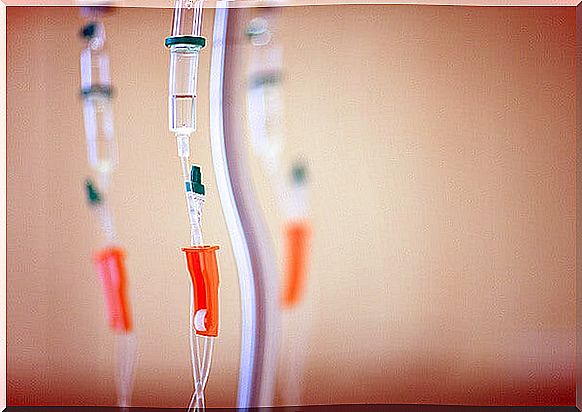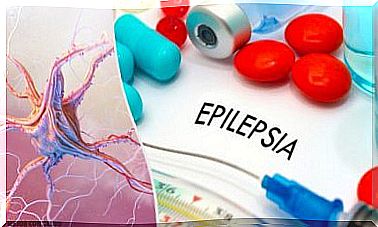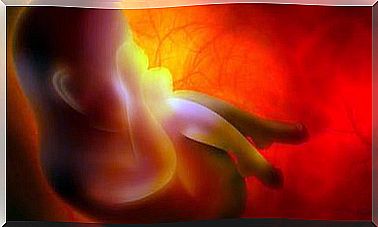What Is Paracetamol Poisoning
Paracetamol is a drug derived from aminophenol with antipyretic and analgesic effects, but with little anti-inflammatory effect, unlike other analgesics and non-steroidal anti-inflammatory drugs (NSAIDs). Do you know what paracetamol poisoning consists of?
In this article we will tell you everything about this condition.
Paracetamol, basic information
Paracetamol is a highly demanded drug to treat moderate pain and fever, mainly. To carry out its analgesic action, paracetamol prevents the synthesis of prostaglandins, which are responsible, among other molecules, for the sensation of pain.
To prevent these molecules from being formed, it blocks the enzyme cyclooxygenase (COX) in the central nervous system. By blocking the synthesis of prostaglandins, paracetamol raises the threshold of pain perception.
As for the antipyretic effect, it is also due to the inhibition of prostaglandin synthesis, specifically PGE2. The reason why this drug is not an anti-inflammatory, but it is analgesic and antipyretic, is that it is only capable of inhibiting COX-3, which is located centrally.
Consequently, inhibition of prostaglandin synthesis does not occur at the peripheral level and cannot act as an anti-inflammatory.
Mechanism of toxicity of paracetamol

Until today, it has been considered that the toxic doses of paracetamol were between 7.5 and 10 g in a single dose and the lethal doses between 10 and 15 g. However, it is now considered that chronic 4-day intake of this drug may be the cause of serious liver damage.
To begin with, we must know that the liver plays a fundamental role in the biotransformation of this drug. More than 95% of paracetamol is metabolized in this way through conjugation reactions and is transformed into glucuronides or sulfates. The little proportion that is not metabolized is excreted in the urine unchanged.
There is another 3 or 8% of paracetamol that is metabolized in the liver by the enzyme complex cytochrome P450. This percentage undergoes oxidation reactions and becomes a metabolite that is a toxic reagent for the body, N-acetyl-para-benzoquinone imine or NAPQI. In normal situations, this toxic metabolite is neutralized by glutathione and thus loses its toxicity.
When glutathione levels fall below 30% of normal, or there is an excess of NAPQI from paracetamol poisoning, this metabolite cannot be neutralized and adheres to the cell membranes of liver cells, the hepatocytes.
This binding of NAPQI to hepatocytes will lead to the death of these cells and over time it will degenerate into liver necrosis. In addition to affecting the liver, the toxic metabolite formed by paracetamol poisoning can also affect the kidney causing acute kidney failure.
Paracetamol poisoning
Paracetamol poisoning produces a clinical picture characterized by the development of liver failure due to necrosis. Symptoms appear over time, which allows the symptomatology to be divided into four stages.
Stage I: mild or non-existent symptoms

The first stage of paracetamol intoxication is considered between 0 and 24 hours after ingestion of the drug. In this period of time, patients normally do not suffer symptoms, however, nausea, vomiting, general malaise and sweating may occur.
Stage II: symptoms of liver damage
This second stage comprises from 24 to 48 hours after ingestion. The onset of liver damage occurs and typical symptoms of hepatitis may develop:
- Pain in the right hypochondrium.
- Sickness.
- Tiredness.
- General discomfort.
Hepatomegaly appears, that is, the liver is larger than normal. In clinical tests, transaminases, which are liver enzymes, are elevated. However, bilirubin and prothrombin time are normal or just slightly elevated.
Stage III: the greatest danger

When we talk about the third stage, we refer to the period of time between 48 and 96 hours after ingestion. It is the phase of greatest liver injury. Markers of liver failure, such as transaminases or bilirubin, are clearly higher.
It is in this phase when the patient is in greatest danger. Normally, death occurs between the third and seventh day after ingestion. This is due to metabolic disorders that are not treatable or secondary complications, such as cerebral edema or arrhythmias.
Stage IV: recovery
The fourth and last stage is that of recovery, through which patients who have managed to survive the third pass. Recovery usually takes 5 to 6 days in patients who are poorly affected. In those who the damage has been more important, this stage can last more than two weeks.
The liver usually regenerates without complications, although it is true that in some patients, various liver disorders can persist chronically.
Treatment of poisoning

Faced with paracetamol poisoning, we must focus on keeping glutathione levels as high as possible in the body, since it is the molecule that neutralizes the toxic metabolite that is causing the toxicity. However, glutathione as a nutritional supplement is poorly absorbed, so other routes have to be used.
To solve this problem, a molecule called N-acetylcysteine is administered. The N-acetylcysteine is widely used as expectorant, but for the treatment of acetaminophen poisoning is based here glutathione ability to donate to our cells.
To take effect, it must be administered no later than 8 hours after the overdose. N-acetylcysteine is transformed into L-cysteine and this into glutathione.
Another drug that also has the ability to replenish glutathione stores is methionine. Doses for this drug are 10 mg divided to be administered over 12 hours. As a last option , liver transplantation could be considered.
Now that you know the risks of paracetamol poisoning, pay attention to the intake, and remember: you should never self-medicate. Consult with your doctor or trusted pharmacist about the appropriate doses according to your needs.









